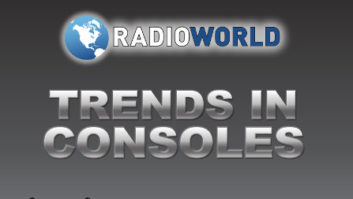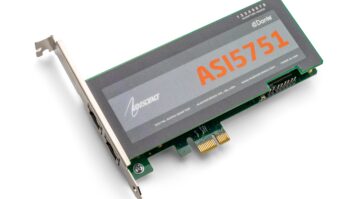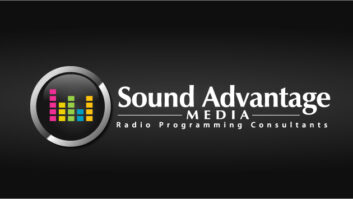At a time when digital pervades most stations, Jerry Whitaker, vice president for standards development at the Advanced Television Systems Committee, argues that there may still be a place for vacuum tubes and vinyl in the modern broadcast plant.

He will explore these ideas in April in an NAB Show session about “The Tube Sound.”
“There is already a growing interest in vinyl recordings and vacuum tube amplifiers,” said Whitaker. “This trend is going to continue; so the question is, how can broadcasters capitalize on it?”
He said many recording studios are using vacuum tube mic preamps. Meanwhile, at least 1,000 classic albums from the ’60s and ’70s have been remastered and reissued on premium-quality 180-gram vinyl.
Fully appreciating the difference in sound quality between digital and analog audio involves a radical shift in listening habits, according to Whitaker.
“Most people have music on in the background while they’re doing other things. When you just sit down and actively listen to vinyl records through tube gear and a good set of speakers, the difference in sound becomes quite apparent.”
Whitaker says there is both a qualitative and quantitative dimension to audio.
“Two pieces of equipment can have identical response, noise and distortion specs, but one subjectively sounds better than the other. I’m not saying that analog necessarily sounds better than digital; but with serious listening tests, there can be a marked difference between the two.”

Jerry Whitaker
Starting over
This renewed interest in vintage sound comes at a time when most stations have tossed their turntables and vacuum tube gear, so the first challenge is how to get started.
The market has changed over 20 years. The legendary Stanton 680 cartridge is no longer in production. The Discwasher brand name has been sold to an overseas company. Broadcast-quality turntables are hard to locate.
“It can be difficult to find knowledgeable vendors who sell styli, cartridges and turntable accessories, but they’re out there,” he said.
Another issue is locating vacuum tube turntable preamps that will interface with broadcast gear. However, many plans and kits are available.
“It’s time for engineers to go forth and build one,” he said. Whitaker said a well-designed tube turntable preamp can have a noise floor at least 70 dB down, reasonably comparable with today’s standards. In the early days of the digital transition, stations used to have a “digital island.” Perhaps now it’s time for an analog island.
Since the trend in broadcast gear is “maintenance free,” one question that may be raised is whether maintenance of tube gear will become time-consuming.
“We certainly don’t want to go back to a radio facility with hundreds of tubes,” said Whitaker, “but a well-designed preamp built with quality components should give good performance for many years.”
The larger issue: How can vinyl recordings and a retro sound work as a strategy for radio stations to attract listeners?

To appreciate the tube sound, you need a tube amplifier. Whitaker argues that hiding the tubes inside the chassis makes very little sense.
“Post-consolidation, most stations sound very similar,” Whitaker said. “By having all-vinyl programs or vinyl days, they can begin to differentiate themselves. It’s also a great way to rediscover some of the forgotten B sides or album tracks that haven’t been played on commercial radio for 20 years or more.”
This concept has been adopted by BBC Radio 6 Music, which set aside New Year’s Day for all-vinyl programming. Stations that want to take the retro sound to the next level may want to include a vacuum tube line amp in the air chain, or at an insert point in the audio processor.
He will explore his ideas in a brief presentation called “The Tube Sound: Fact or Fiction?” during Saturday’s SBE Ennes program about “Video and Audio on IP to IPTV.”
More Ennes
Fred Baumgartner, CPBE, CBNT, is with the Ennes Educational Foundation Trust. He says of Jerry Whitaker, “He is one of those quiet people who make good things happen.”
Here’s Baumgartner on the rest of the NAB Show Saturday tech sessions:
The Ennes program answers the question: “What is most important for working broadcast engineers to know this year?”
Consider the tutorial from Wayne Pecena — not the usual networking 101, but an in-depth look at what skills broadcast engineers need, how to know if you and others have what they need, and how to get what you need and manage the peculiar and unique flavors of IT technology that is broadcast.
Years ago, Terry Baun presented a day-long tutorial at NAB as networking intersected broadcasting; and the SBE launched a certification. The intersection has become more intense and interesting than simple networking or even VoIP. This program moves up a notch in addressing the management of the technology, your career and even how you put teams together to address IT projects and operations.
Even radio-centric broadcast engineers will have an interest in broadcasting’s evolving relationship with “the cloud” — what the cloud is, what it can do for us and how to utilize cloud technologies in our business.
Then there is eMBMS. Yes, in LTE/3GPP cellular networks there is a point multi-point specification that even goes to single-frequency networks; so as mobile devices evolve, we have yet another means to broadcast in Evolved Multimedia Broadcast/Multicast Service. Will this multicast capability affect how we distribute our content?
The Ennes Workshop schedule is on the SBE website. The program will take place April 17 at the Las Vegas Convention Center, 8 a.m. to 5 p.m.Attendance requires a full NAB or PBS Techcon registration. Non-NAB members who are members of the SBE can receive a partner discount; access the code at www.sbe.org.
The program is the largest gathering of broadcast engineers in one room each year and a centerpiece of the Ennes and the SBE live educational programs. CTOs, engineers and experts take broadcast engineers deep under the hood, behind the scenes and net out the important points. And occasionally there is a Jerry Whitaker, someone who makes a big difference in our profession, who talks about something downright interesting and just plain fun.











